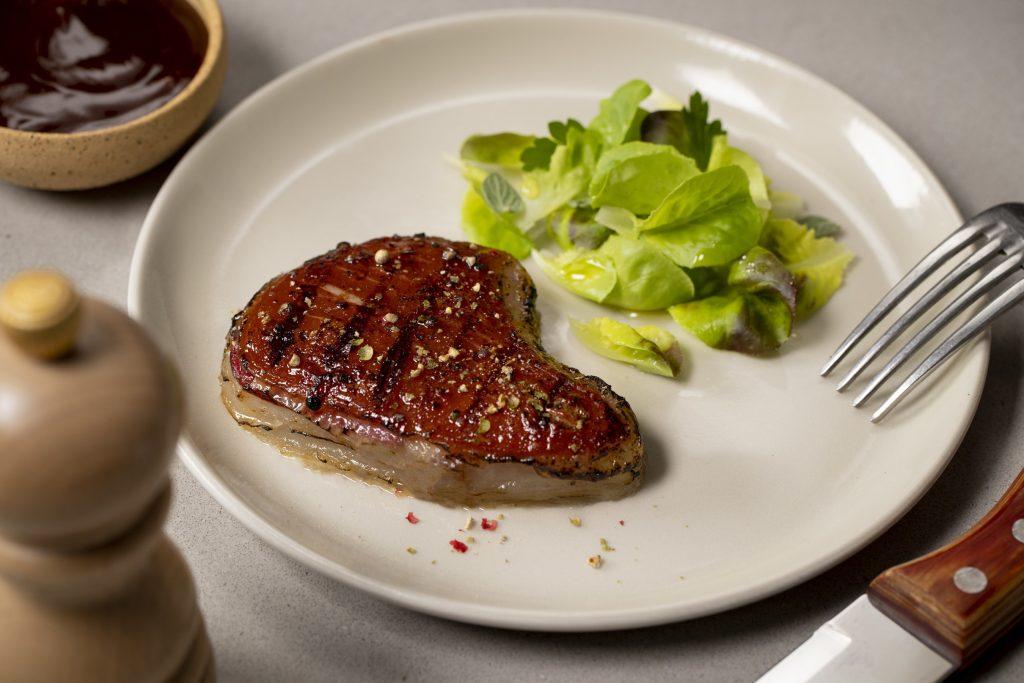According to China3D printingIt is understood that Japanese precision instrument manufacturer Shimadzu is currently developing an automatic meat 3D printing system.
In collaboration with Osaka University and consulting firm Sigmaxyz Inc, Shimadzu is said to be developing a machine capable of producing large quantities of cultured meat in an in-line setup. Through this project, the company aims to come up with a method by 2025 to produce meat substitutes that not only replicate the authentic texture, but also taste better.

Meat samples made using Osaka University’s 3D printing technology. Image from Thailand’s national news website.
Shimadzu’s Meat Automatic Printing Program
Shimadzu (Shimadzu), established in Kyoto in 1875, is better known as a manufacturer of analytical, test and measurement instruments or industrial and aircraft equipment than for its 3D printing technology.Nonetheless, according to China3D printingNet understands that the company is now pursuing the idea of growing artificial meat from animal cells as a means of developing a cruelty-free alternative to killing and eating livestock.
While the nature of the meat that Shimadzu is trying to make has not been released, it is believed to have been produced largely through techniques honed at Osaka University. Using this process, cells are said to be layered into tissues such as muscle, fat, and blood vessels, which are then brought together to form fibers that resemble real meat.
What’s more, the technology is reportedly even able to create “marbled” meat, which, in real terms, means that it contains white specks of intramuscular fat that give it extra tenderness and flavor.
By integrating the process developed in Osaka into an automated unit, Shimadzu is said to believe it is possible to grow cells into structures and then test them for taste and texture on an “assembly line.” While the company is also considering applications of the technology in regenerative medicine and drug discovery, for now, its focus is on preparing meat samples for the 2025 Osaka-Kansai Expo.

Manufacturing process and samples of cultured Wagyu beef produced by the “TIP” 3D printing method developed by Osaka University.
Wagyu beef experiment at Osaka University
Shimadzu may not have shown the full process behind its planned meat-printing setup, but it’s likely related to the method developed at Osaka University last year. In a project with printing experts Toppan, the researchers managed to 3D print marbled Wagyu beef in a way that is said to be unique, as it closely replicates the natural texture of the meat.
To achieve this, the Osaka team has come up with a method they call “tendon-gel-integrated bioprinting,” or “TIP,” in which tendon-like gels can be built layer-by-layer into steak-like structures. Interestingly, the scientists’ technique also allowed the integration of different tissue types into the same food, which ultimately allowed them to better replicate the real meat equivalent.
Once the researchers honed their method, they deployed it to recreate the everyday wagyu samples they imaged and modeled. By layering a set of 72 bovine cell fibers, including those designed to build muscle, fat and capillaries, the team found they were able to do so while defining the texture of the final meat, and they think it even Can be used to adjust fat content.

MeaTech 3D printed 3.67 oz cultivated steak. Photo by Shlomi Arbiv.
Development of 3D printed meat in other regions:
While 3D-printed meat may not be ready for pickup at local supermarkets, the technology behind its production continues to advance, and late last year MeaTech announced that it had broken new ground with success at its lab in Nesziona, Israel 3D printed a whole 3.67-ounce steak.
But researchers at Zhejiang University in China turned things in a different direction, developing a method for 3D printing meat using plant-based gels. The team’s soy protein, pea protein and wheat gluten foods are said to provide similar levels of nutrients as actual meat without incurring the same health and sustainability-related costs.
In Barcelona, Novameat also recently proposed a new method of meat production, including 3D printing cyanobacteria into steaks. Made from animal cells, plant derivatives, fungi and algae, and spirulina (a specific type of algae known for its high protein), the company’s blue steak is designed to push the limits of technology, so it’s unlikely to make it Bring to market.
China 3D Printing NetworkOriginal article!
(responsible editor: admin)


0 Comments for “Japan’s Shimadzu is developing an automated meat 3D printing system”